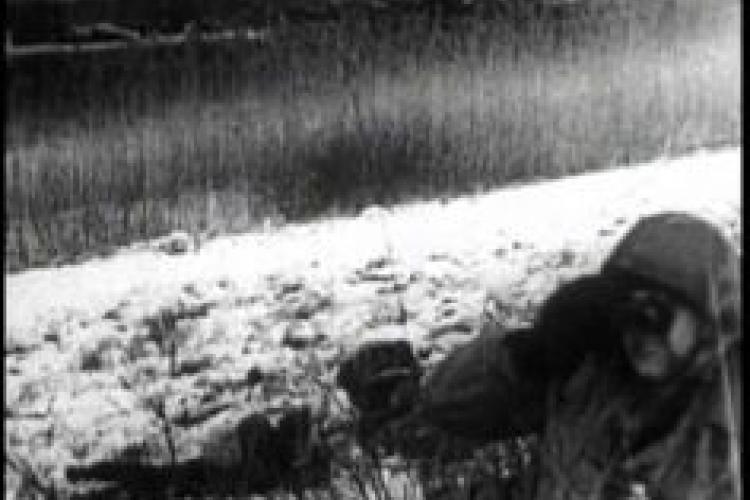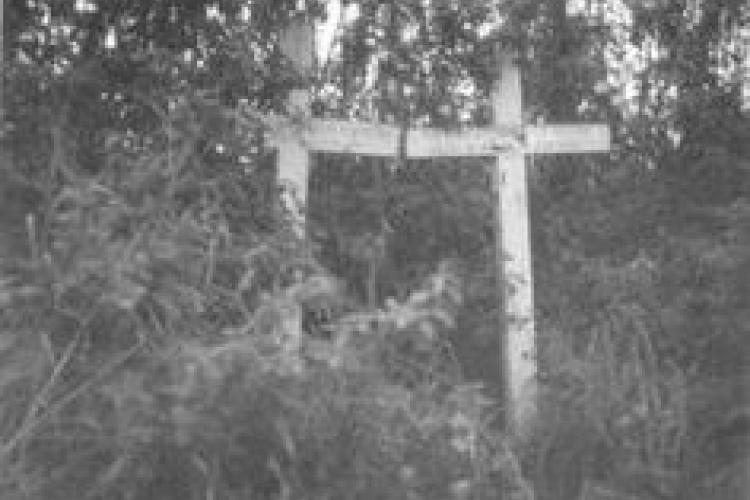Divisional Unit
Awards
SERVICE NO. A 61417
AWARDS: 1939-45 Star / France & Germany Star / Defence Medal
War Medal 1939-45 / Canadian Volunteer Service Medal + clasp
DATE OF BIRTH: November 21, 1920 – Ripley – County of Bruce – Ontario.
DATE OF DEATH: May 1, 1945 24 years 5 months
MOTHER: Catherine Montgomery – Dungannon – County of Huron – Ontario.
SISTER: Mrs. Francis Reid – Dungannon – Ontario.
SISTER: Mrs. Isabelle Collins – Preston – Ontario.
CEMETERY: Holten Canadian War Cemetery – Overijssel – Netherlands.
IX H 2
Height: 5’ 91/2” Weight: 166 pounds
Complexion: fair Eyes: blue Hair: light
Occupation: General Store / Service Station Attendant
Longshoreman in Goderich as a fireman on lake boats.
Religion: United Church of Canada
Residence: R. R. 5 Saltford - Ontario
Enlistment: August 2, 1942 – Westmount – Nova Scotia
Enlistment Age: 21 years 9 months
Robert attended high school in Goderich for two years and left school at the age of 17 years and then he worked for his brother Gordon who owned a general store and gas station. Robert was an attendant. He also worked for two seasons as a fireman on the lake boats out of Goderich.
Gordon served in the Royal Canadian Navy and served at the naval base at HMCS Avalon located in St. John’s Newfoundland.
Robert did his banking at the Bank of Commerce and at the time of his death the balance in the account was $128.46. He also has $1,800.00 in Victory Bonds and a life insurance policy with North American Life in the amount of $1,500.00.
Robert enlisted into the Canadian Army Reserve forces on April 1, 1942 in Kitchener – Ontario and was attached with them until July 29, 1942.
- On Sunday August 2, 1942 at 15:00 hours Gunner Montgomery was Taken on Strength as active personnel of the 6th Anti Aircraft Battery based at Westmount – Nova Scotia.
The diary of the 6th AA Battery state that Gunner Montgomery was assigned a number of duties such as dishwashing detail, guard duty, hut orderly and general fatigue
- On August 8, 1942 - this soldier was appointed as a A/L/Bdr or Artillery Lance Bombardier.
While in training they had morning parade and afternoon parade and during the week they would have gun drill with respirators, gas cape drill, foot and arm drill, physical training, bayonet fighting with respirators, lectures, rifle drill, line lying, unarmed combat, mending kit, bayonet fighting, map reading, Lewis gun training, aircraft identification, Bren gun training and guard procedures.
Upon completion of this training a soldier will then receive his Mars badge showing that the soldier is now fully trained. Gunner Montgomery received his on January 1, 1943.
Gunner Montgomery and his unit arrived at Halifax Harbour on February 24, 1945 and departed from the shores of Canada on February 25, 1945. They arrived overseas on March 5, 1945 and Gunner Montgomery then reported for duty the following day.
- On March 6, 1945 - he transferred to the 2nd Canadian Infantry Training Centre with the rank of Private and on that same day Private Montgomery qualifies as a Driver IC Class III. He was able to operate internal combustion vehicles from jeeps to 10 ton trucks.
- Private Montgomery left England on April 21, 1945 and arrived on the continent on April 22, 1945.
Private Montgomery was then Taken on Strength by the Lincoln and Welland Regiment on April 26, 1945. Four days later on April 30, 1945 he would receive fatal head wounds that would claim his life.
In the field…..
- The 4th Canadian Armoured Division arrived in Normandy in late July 1944 as part of the 2nd Canadian Corps.
- The Lincoln and Welland Regiment had arrived on Norman soil on July 25, 1944 as part of the 4th Canadian Armoured Division
The 2nd Canadian Corps crossed the Rhine River into Germany on March 23, 1945 and the 4th Canadian Armoured Division artillery supported the crossing. On April 1, 1945, the 4th Division crossed the Rhine and took up the line on the right of the Canadian 1st, 2nd and 3rd Divisions. After clearing Almelo of any resistance on April 4/5 the 4th Division set its sites on Germany and around April 21, 1945 they crossed the Kusten Canal. They had covered 100 miles.
The situation that presented itself to the 4th Canadian Division and the Lincs was that the terrain north of the Kusten Canal was full of ditches, streams and other water obstacles that were going to be a challenge to the 4th Canadian Armoured Division. At this stage in the war the enemy in this part of Germany still had a large presence which included five divisional sized commands.
The 4th Division on April 20th began to expand its bridgehead and in doing so the casualties mounted. On April 21st, the 10th Infantry Brigade (Lincoln and Welland) began to force the enemy back across the Aue River and expanded their bridgehead but at a very high casualty rate. This was achieved by April 25, 1945. Between April 20-25, 1945 the 10th Infantry Brigade suffered 402 casualties.
- On the morning of April 25th, the 4th began their push toward Bad Zwischenahn and the 10th Infantry Brigade had the right (eastern) flank. Roadblocks, mines and craters, covered from the fire of self propelled guns, mortars, machine guns delayed the advance.
The Lincoln and Welland on the right flank were having their own difficulties from continual obstacles but they also had trouble with communications between tanks and the infantry because the hedges here were so thick. The were moving north to seal the town from the south-east with their objective being the eastern part of the town. They had the support of one medium / three field artillery / one Heavy AA Regiment / a battery of rockets / and a full tank regiment.
- On April 26, 1945 - Private Montgomery and others arrived as reinforcements.
The Lincs captured the town of Ekern on April 28th and the following day April 29th they seized the high ground on the southern edge of Bad Zwischenahn.
The weather on April 30, 1945 was cloud and rain for the better part of the day.
The Regiment was able to reach the rail line at the south of Bad Zwischenahn and at 10 am they then began to work their way slowly into the town and to their objectives.
In the town itself there was only one lone machine gun nest and a self propelled gun.
The advance began with “D” Company feeding one platoon after the other over the rail line. “A” Company passed through “D” Company and “B” Company began to firm up at the rail/road crossing. This objective was achieved and “C” Company passed through to their objective.
At 11:50 am “D” began to move forward slowly and with caution on their way to their objective which was the airfield.
All houses had been occupied up to the rail/road crossing
We feel that Private Montgomery was a member of “B” Company which had previously secured the rail/road crossing because it was at this location at approximately 2 pm when Private Montgomery received a fatal head wound. German snipers had been very active the whole day.
At 5:30 pm Private Montgomery was received at No. 12 Canadian Field Ambulance which was attached to the 4th Canadian Division and received immediate attention. Then at 9:15 pm he was transferred to the 3rd Canadian Casualty Clearing Station. While here the medical staff were able to get Private Montgomery to move his right limbs but he was unable to move his left limbs. His wound was to the front right side of the head. Then very early in the morning of May 1, 1945, Private Montgomery was sent to 25 British General Hospital stationed at Wettrigen in Germany.
At 7:15 am on the morning of May 1, 1945, Private Montgomery succumbed to his wounds. He had been with his unit a total of 5 days.
Robert was buried on May 1, 1945 with full military honours and Christian rites.
- On May 4, 1945, the Government of Canada sent a Canadian Pacific Telegraph to his mother Catherine informing her of the death of her son Private Montgomery.
- On September 5, 1945, The Director of Records per the Adjutant General sent a letter to his mother Catherine stating that her son Private Montgomery had been buried with full military honours and Christian rites at a St. Joseph House Cemetery - Wittingen – Germany. Plot B6 Row B Grave 6. He also stated that at a later date, Robert would be reburied into a permanent cemetery.
His personal effects were returned to his mother in Dungannon and they included…..
1 leather wallet 1 case with miscellaneous German souvenirs
1 pocket diary 1 lighter
1 fountain pen 3 key rings
1 tin box 1 wooden cigarette case
1 dolly bag snapshots.
Mrs. Montgomery received a letter dated January 25, 1949 with an enclosed photo of the grave following Robert’s reburial at Holten Canadian War Cemetery.
Mrs. Montgomery was the Executrix of the estate of Robert and would have received the monies in the amount of $128.46 from the Bank of Commerce, the $1,800.00 in Victory Bonds that Robert had purchased, the $1,500 from the North American Life Insurance policy that Robert had purchased, $136.93 that was found in the personal belongings of Robert as well as Robert’s last pay of $161.93.



